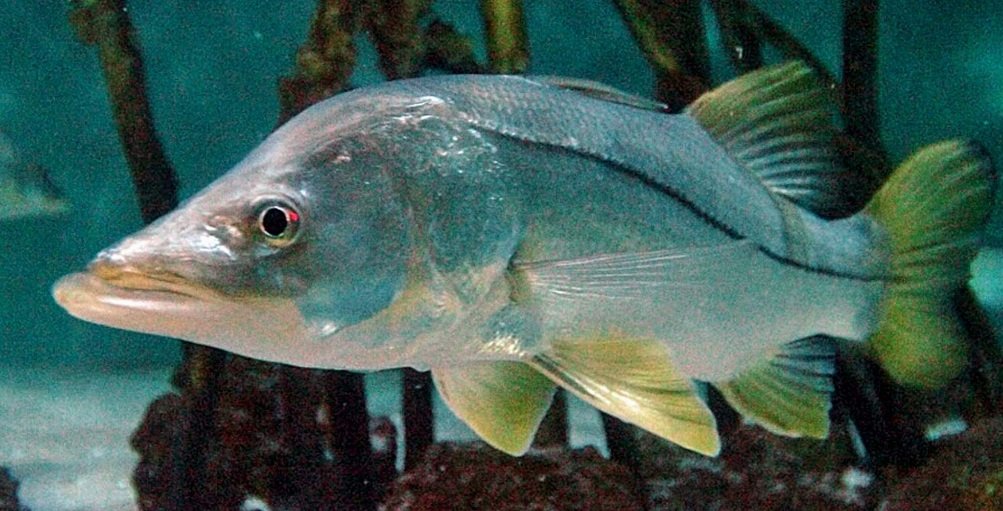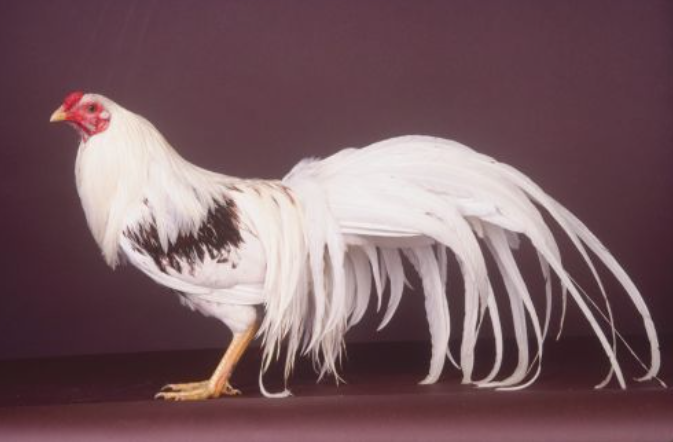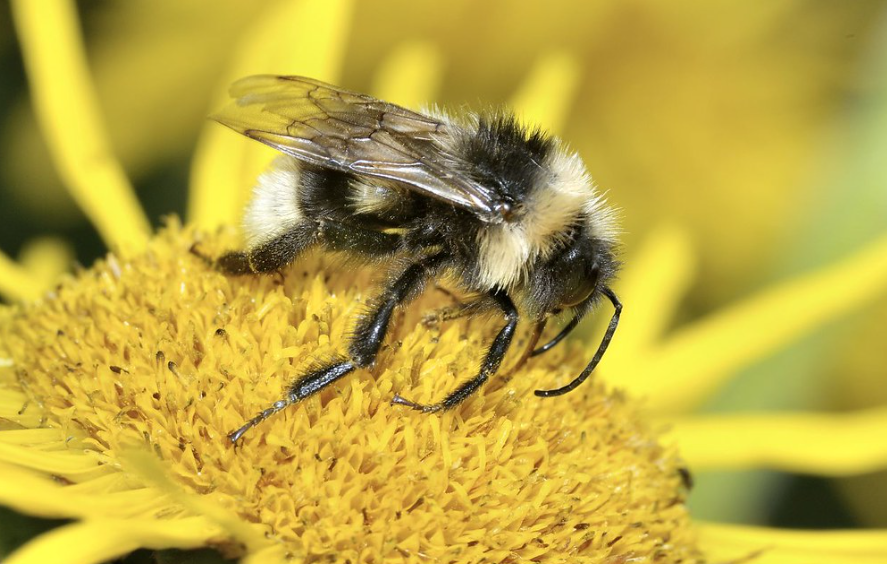
Quick Top 10 Facts about Snook Fish
| SCIENTIFIC NAME | Centropomus undecimalis |
| CLASSIFICATION | KINGDOM: Animalia PHYLUM: Chordata CLASS: Actinopterygii ORDER: Perciformes FAMILY: Centropomidae GENUS: Centropomus SPECIES: C. undecimalis |
| SIZE | Length: Typically 1.5–3 feet (0.5–0.9 meters); can reach up to 4.5 feet (1.4 meters) |
| HABITAT | Coastal waters, estuaries, lagoons, and mangroves in the western Atlantic Ocean, especially around Florida, Gulf of Mexico, and the Caribbean |
| DIET | Carnivorous; feeds on smaller fish, crustaceans, and shrimp |
| SPECIES | Snook, also known as common snook or robalo, is a popular game fish known for its fighting ability |
| COUNTRY | Primarily found in coastal waters of the United States (especially Florida), Mexico, and Central America |
| REPRODUCTION | Spawns in warm months; eggs are released in coastal inlets and fertilized externally |
| LIFE SPAN | Up to 15 years in the wild |
| CONSERVATION STATUS | Not currently endangered, but populations are managed through fishing regulations and seasonal closures |
Amazing Facts About Snook Fish
1. Highly prized game fish
Snook are one of the most sought-after inshore game fish due to their strength and acrobatic fights when hooked.
2. Sensitive to temperature
They are very sensitive to cold water and can die in large numbers during cold snaps.
3. Unique spawning behavior
Snook migrate to inlets and passes during the summer months to spawn, often in large groups.
4. Prolific breeders
A single female Snook can release millions of eggs during spawning season.
5. Opportunistic feeders
They feed primarily at night or in low-light conditions and ambush prey with sudden bursts of speed.
6. Known for lateral line
Snook have a very prominent lateral line that helps them detect movement in the water, even in the dark.
7. Popular among anglers
Their aggressive strikes and aerial displays make Snook a favorite among sport fishers.
8. Can adapt to freshwater
Although primarily saltwater fish, Snook can tolerate and even thrive in freshwater environments.
9. Subject to strict fishing regulations
Due to their popularity and vulnerability, many areas have seasonal closures and size limits for Snook.
10. Important part of the ecosystem
As predators, Snook help maintain the balance of species in their coastal and estuarine ecosystems.
Intriguing facts about Snook Fish: Characteristics and Habitat
The snook fish fascinates many people because of its fighting skills and environmental adaptability. It is often considered one of the most popular game fish in the coastal areas of the Americas. Due to its unique look, challenging capture, and delicious flavour, snook is cherished by both fishermen and the environments it inhabits. This article will examine the physical traits, habitat, diet, reproduction, and conservation status of snook fish to provide a better understanding of their significance and uniqueness.
An Overview of Snook Fish
Several species within the Centropomidae family are referred to as “snooks”, with the Common Snook (Centropomus undecimalis) being the most well-known and often targeted species. Other varieties of snook include fat snook, smallmouth snook, and black snook. Since many species share similar physical characteristics, behaviours, and preferred habitats, people often use the term “snook” to describe the entire family.
Although the common snook is the most widely known, all snook species are prized for their tenacity when captured. This trait makes them an excellent choice for fishermen seeking a challenge in both freshwater and saltwater environments.
Physical Attributes of the Snook Fish
Snook fish possess sleek and distinctive features that make them easy to identify. Their unique morphological characteristics distinguish them from other fish found along the shore.
Body Form
Snook swim well in both freshwater and coastal environments because of their long, lean bodies. Their body shape suits their predatory lifestyle, enabling them to swiftly pursue and capture prey.

The Colour
The colour of snooks can vary depending on the species and habitat. The common snook, for example, has a silvery body with lighter tones on the belly and darker shades on the back. A prominent black lateral line that stretches from the gill cover to the tail is another feature that sets snooks apart from other fish species.
The Fins
The large, pointed dorsal fins of snook fish contribute to their streamlined appearance. Their ability to swim with agility is further aided by the large pectoral fins, usually located just behind the skull. The forked tail fin allows them to move quickly and efficiently, which proves beneficial when turning sharply or darting to catch prey.
The Oral Cavity
One of the most distinctive features of a snook is its large mouth, filled with sharp teeth. These teeth make it easier for snooks to catch and dismember prey. Another identifying feature is that the lower jaw is usually longer than the upper jaw, a characteristic that makes this species easy to recognise.
The Snook Fish Habitat
Although snook primarily inhabit coastal and estuary waters, they are known for their ability to migrate between different habitats. Both brackish and salty waters are common habitats, especially in the warm, tropical areas of the Americas.
Habitats of Choice
Coastal Waters
Mangroves, salt marshes, and estuaries with salinity levels ranging from fresh to saltwater offer ideal habitats for snook. In shallow seas, snooks often take refuge in underwater structures such as rocky outcrops and seagrass meadows.
Freshwater and Rivers
While snook are predominantly found in coastal areas, they may migrate into lakes, rivers, and streams during their life cycle. This migration occurs more frequently during their juvenile stage when young snooks seek freshwater habitats for growth and feeding.
Warm Waters
Snook are commonly found in waters with temperatures ranging from 21°C to 29°C (70°F to 85°F). Cold water can adversely affect their survival and behaviour, as they are highly sensitive to temperature changes.
Geographical Range
The majority of snook live along the Atlantic coast of North America, extending from Florida and the Gulf of Mexico down to Brazil. The Pacific snook, another species, inhabits waters along the Pacific coast, including regions such as Mexico and Central America.
Food and Feeding Practices of Snook Fish
Snook fish are predators that mainly consume smaller fish and crustaceans. They feed on a variety of live prey, which they catch using their sharp teeth and swift swimming abilities.
Diet
Smaller Fish
The diet of snook consists mainly of smaller fish such as silversides, mullet, herring, and sardines. Snooks are particularly drawn to these schools of smaller fish, which they can swiftly attack.
Crustaceans
Snook also consume prawns and crabs, particularly in muddy, shallow areas. While their primary diet consists of fish and crustaceans, snooks occasionally feed on worms, molluscs, and other invertebrates.
Behaviour in Hunting
Snook are ambush predators. They often wait patiently in shaded areas, such as under docks, mangrove roots, or beneath underwater vegetation, before swiftly darting out to seize prey. Their speed and keen vision help them track and capture their prey accurately. Tides influence snook’s feeding patterns, as they are most active during high tide when food gets pushed closer to the shore.
The Life Cycle and Reproduction of Snook Fish
The reproductive cycle plays a significant role in the dynamics of snook populations. Their eggs and larvae undergo considerable growth, and they typically spawn in the warmer months.
The Spawning Season
The snook spawning season usually begins in spring and continues throughout summer, with the highest spawning activity occurring between March and August. During this time, snook gather in large schools and migrate to deeper offshore areas to spawn.
Larvae and Eggs
Snook release their eggs into the water, where external fertilisation takes place. The tiny larvae then float in the water currents. Over time, the larvae develop into juvenile snook, which migrate towards freshwater and estuarine areas to grow stronger and larger.
Maturity and Growth
Snook grow rapidly. Juvenile snooks spend their early years in shallow coastal waters, where they are protected from larger predators. As they mature, they migrate towards deeper waters. Snooks reach sexual maturity between the ages of two and three, depending on their environment and the availability of food.
Conservation Status and Risks for Snook Fish
Although snook are not typically classified as endangered, they face threats from overfishing, environmental changes, and human activity. Sustainable management practices are crucial for the long-term survival of snook populations, even though some species are more resilient than others.

Risks
Overfishing
Both recreational and commercial fishermen highly target snook. If fishing regulations are not followed correctly, overfishing, especially during spawning seasons, may cause a decline in local populations.
Habitat Destruction
Development, pollution, and climate change harm the snook’s breeding and feeding grounds, especially the destruction of mangrove forests and estuary ecosystems.
Water Pollution
Increased concentrations of pollutants, such as plastics, heavy metals, and agricultural runoff, can negatively impact snook population health and water quality.
Conservation Initiatives
Several regions have implemented fishing regulations to protect snook stocks, including catch limits, size restrictions, and seasonal closures to prevent overfishing during breeding seasons. Habitat restoration efforts, such as the protection of mangrove ecosystems, help preserve critical snook nursery grounds. Public education initiatives aim to raise awareness of the importance of preserving coastal ecosystems and promoting sustainable fishing practices.
Fishing for Snook: A Well-Liked Activity
Snook fishing is a popular activity in coastal regions, particularly in Florida, Texas, and Mexico. Beach anglers and boat fishermen are eager to capture snook due to its reputation as a strong and skilled fighter. To manage the snook’s power and stamina during a battle, anglers typically require specialised equipment, including strong rods and durable fishing lines.
FAQ (Frequently Asked Questions) about Snook Fish
Q: What is a Snook Fish?
Ans: The Snook is a popular game fish found in warm coastal waters. Known for their sleek bodies and strong fighting abilities, they are prized by anglers. There are several species of snook, with the Common Snook (Centropomus undecimalis) being the most well-known in the western Atlantic and Gulf of Mexico regions.
Q: Where does the Snook Fish live?
Ans: Snook are found in coastal waters, estuaries, lagoons, and mangrove shorelines, particularly in the southeastern United States, Gulf of Mexico, and Central and South America. They prefer warm water environments and are sensitive to sudden temperature drops.
Q: What does the Snook Fish eat?
Ans: Snook are carnivorous and feed primarily on smaller fish, shrimp, and crustaceans. They are ambush predators, often lying in wait near structures or vegetation and quickly striking at prey when it comes close.
Q: How big does a Snook Fish get?
Ans: Common Snook can grow to lengths of 3 to 4 feet (0.9 to 1.2 meters) and weigh up to 50 pounds (22.7 kg). However, most snook caught by anglers are typically between 5 and 15 pounds.
Q: Are Snook Fish dangerous?
Ans: Snook are not dangerous to humans. While they have sharp gill plates that can cause cuts if not handled properly, they are generally safe to catch and release or consume. As always, caution should be used when handling any wild fish.
Q: How does the Snook Fish defend itself?
Ans: Snook rely on their speed and agility to escape predators. Their silvery bodies help them blend in with the water, and they use rapid bursts of speed to dart away from threats. Juvenile snook also take refuge in mangroves and grassy areas for protection.
Q: What does the Snook Fish look like?
Ans: Snook are sleek, silvery fish with a prominent black lateral line running from their gills to their tail. They have a sloping forehead, a large mouth with a protruding lower jaw, and a body built for fast swimming. Their fins can be yellowish or transparent.
Q: How long do Snook Fish live?
Ans: Snook can live up to 15 years in the wild, although their lifespan may vary depending on environmental conditions and predation. Larger snook are usually older individuals and are often protected by catch limits in sport fishing.
Q: Can you keep a Snook Fish as a pet?
Ans: Snook are not suitable for home aquariums due to their size and active nature. They require large, well-maintained aquatic environments, making them impractical to keep as pets. They are best appreciated in the wild or through regulated sport fishing.
Q: Are Snook Fish endangered?
Ans: Snook are not currently endangered, but their populations are carefully managed due to their popularity in sport fishing and vulnerability to cold weather. Regulations such as size limits, seasonal closures, and catch-and-release rules help maintain healthy populations.
#SnookFish, #SaltwaterFishing, #GameFish, #CoastalFish, #AnglersLife, #EstuaryWildlife, #FishFacts, #MarineBiology, #SnookFishing, #SportFishing
Our sources and references about Snook Fish
1: Wikipedia – Common Snook
2: Florida Fish and Wildlife – Snook Fishing
3: Florida Sportsman – Snook
4: NOAA Fisheries – Common Snook


